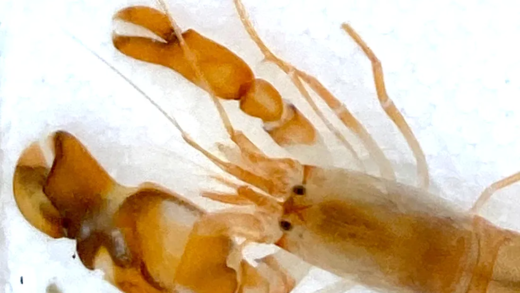Deserts, from the Antarctic to the Sahara, showcase unique ecosystems and survival strategies for plants and animals. Cold deserts differ from hot ones in temperature and characteristics, with specialized adaptations for survival. Deserts play critical roles in Earth’s ecosystem, from carbon storage to habitat for unique species. Interestingly, deserts can also be found in unexpected locations, highlighting their diversity across the globe.
The Largest Desert in the World
Deserts are fascinating landscapes, and the largest desert in the world is none other than the Antarctic Desert. Spanning over 14 million square kilometers, this cold desert might surprise many who associate deserts exclusively with heat and sand. It’s crucial to understand that a desert is defined by its low precipitation levels, not just its temperature. In Antarctica, annual rainfall is less than 250 mm, making it a true desert despite its icy appearance.
This unique classification challenges common perceptions about deserts. While the Sahara is often touted as the largest hot desert, it pales in comparison to the vastness of Antarctica. The characteristics of the Antarctic Desert include:
- Extremely low temperatures, averaging around -20°C.
- Minimal vegetation, primarily mosses and lichens.
- Presence of ice sheets rather than sand dunes.
Understanding this helps broaden our view of what constitutes a desert, highlighting the diversity of these arid regions worldwide.
How Deserts Form
The formation of deserts is a complex process influenced by various climatic and geographical factors. Deserts typically arise from a combination of the following processes:
- Rain Shadow Effect: Mountains can block moist air from reaching inland areas, creating dry regions on the leeward side.
- High Pressure Systems: Areas under high atmospheric pressure often have descending air, leading to clear skies and low precipitation.
- Cold Ocean Currents: These currents can cool air masses, reducing moisture and contributing to aridity on adjacent land.
These factors create an environment where water is scarce, leading to the development of deserts over time. For example, the Atacama Desert in Chile is one of the driest places on Earth, primarily due to its location relative to the Andes mountains and cold ocean currents. Understanding these processes is vital for appreciating the intricate balance of ecosystems within desert environments.
Hot vs. Cold Deserts
Not all deserts are sandy and sweltering. While many people think of hot deserts like the Sahara, cold deserts exist as well. Cold deserts, such as the Gobi Desert in Mongolia, experience harsh winters with significant snowfall. Here’s a quick comparison:
- Hot Deserts: Typically have high temperatures, minimal rainfall, and sandy or rocky terrains.
- Cold Deserts: Experience low temperatures, especially in winter, and may have snow cover.
Both types share the common trait of low precipitation but differ significantly in temperature and ecological characteristics. This distinction is essential for understanding the survival strategies of plants and animals adapted to these extreme conditions.
Characteristics of Different Types of Deserts
Deserts are not just vast expanses of sand; they exhibit a remarkable range of characteristics that distinguish them from one another. The diversity of deserts can be categorized primarily into hot and cold deserts, but there’s much more to explore. Here are some key features of various deserts:
- Hot Deserts: These typically have high temperatures and minimal rainfall. The Sahara, for instance, showcases sand dunes, rocky plateaus, and sparse vegetation. It is home to iconic wildlife such as camels and various reptiles.
- Cold Deserts: Unlike their hot counterparts, cold deserts experience freezing temperatures, especially in winter. The Gobi Desert is a prime example, with its harsh climate and seasonal snow cover. Vegetation is adapted to extreme conditions, with hardy plants like sagebrush.
- Coastal Deserts: These deserts, such as the Namib Desert, have unique features due to their proximity to oceans. They often have fog as a primary moisture source, supporting specialized flora and fauna.
- Subtropical Deserts: Found near the Tropics, these deserts (e.g., the Sonoran Desert) are characterized by hot summers and mild winters, with occasional rainfall during specific seasons. They support diverse plant life, including cacti and succulents.
Each desert type plays a crucial role in the global ecosystem. Understanding these characteristics helps us appreciate the unique adaptations of the flora and fauna that thrive in these extreme environments.
Desert vs. Semi-Arid Regions
Deserts and semi-arid regions are often confused, yet they exhibit distinct differences. The main characteristic that defines a desert is its aridity, which refers to low precipitation levels. Typically, deserts receive less than 250 mm of rain annually, while semi-arid regions receive between 250 mm and 500 mm. This difference significantly impacts vegetation and wildlife.
- Deserts: These are characterized by extreme dryness, sparse vegetation, and harsh climates. Plants like cacti and xerophytes dominate, adapted to conserve water.
- Semi-Arid Regions: These areas have a bit more moisture, allowing for more diverse vegetation, including grasses and shrubs. They often support agriculture and livestock, unlike true deserts.
Understanding this distinction is vital for ecological studies and conservation efforts. Semi-arid regions can often be more hospitable for human activities, while deserts require specialized knowledge for sustainable interaction.
The Largest Deserts Besides the Sahara
While the Sahara is often the most recognized desert, several other vast deserts deserve attention. Here’s a look at some of the largest deserts in the world:
- Antarctic Desert: As mentioned earlier, this cold desert is the largest in the world, spanning over 14 million square kilometers.
- Arctic Desert: Covering around 13.9 million square kilometers, this desert is also cold and experiences extreme conditions.
- Arabian Desert: Stretching across 2.33 million square kilometers, this hot desert is known for its sand dunes and rich history.
- Gobi Desert: Located in Asia, it covers approximately 1.3 million square kilometers and is famous for its harsh climate and significant temperature variations.
- Kalahari Desert: This semi-arid sandy savanna covers 900,000 square kilometers and is rich in wildlife and vegetation.
These deserts contribute significantly to our understanding of arid environments and the adaptations of the organisms that inhabit them. Each has its own unique features, making them essential components of Earth’s diverse ecosystems.
Unique Features of Cold Deserts
Cold deserts are intriguing ecosystems that defy the traditional image of deserts being hot and sandy. One of the defining characteristics of cold deserts is their temperature fluctuations. Unlike hot deserts, cold deserts such as the Gobi or the Great Basin Desert experience harsh winters, with temperatures often dropping below freezing. These conditions create a unique habitat where specific flora and fauna thrive. Key features include:
- Seasonal Snow Cover: Many cold deserts receive snowfall during winter, which contributes to their water supply as it melts in spring.
- Vegetation Adaptations: Cold deserts host hardy plants such as sagebrush, which have adapted to survive in low moisture and extreme temperatures.
- Wildlife Diversity: Species like the snow leopard and various rodents have evolved to endure the cold, showcasing remarkable adaptations for survival.
This diversity in flora and fauna highlights the adaptability of life in extreme conditions, making cold deserts just as vital as their hotter counterparts.
Survival in Extreme Conditions
Desert ecosystems are fascinating due to the extraordinary adaptations of plants and animals that survive under extreme conditions. The survival strategies employed by these organisms are essential for thriving in the harsh environments of deserts. Some key adaptations include:
- Water Conservation: Many desert plants, like cacti, have developed thick, waxy skins to minimize water loss. They also store water in their tissues, allowing them to survive long dry spells.
- Behavioral Adaptations: Animals such as the fennec fox are nocturnal, hunting during cooler night hours to avoid the heat of the day.
- Physiological Changes: Some species can tolerate extreme temperatures or go long periods without water. For example, camels can withstand dehydration and can lose up to 25% of their body weight without serious harm.
Understanding these survival strategies is crucial for appreciating how life can flourish even in the most inhospitable places on Earth.
The Role of Deserts in Earth’s Ecosystem
Deserts play a crucial role in maintaining the planet’s ecological balance. Despite their harsh conditions, they contribute significantly to the Earth’s biodiversity. Some of the important roles deserts serve include:
- Carbon Storage: Deserts are important carbon sinks, helping to mitigate climate change by absorbing carbon dioxide from the atmosphere.
- Soil Formation: The unique conditions in deserts contribute to soil formation, influencing nutrient cycles and supporting diverse plant life.
- Habitat for Unique Species: Many species found in deserts are not found anywhere else, contributing to global biodiversity and ecological health.
By understanding the vital functions of deserts, we can better appreciate their importance in our global ecosystem.
Unexpected Places for Deserts
Deserts can be found in some surprising locations around the world, challenging our preconceived notions about where they can exist. While we often think of deserts as vast stretches of sand in hot climates, they can also be found in cold regions. Notable unexpected desert locations include:
- Antarctica: As the largest desert in the world, it showcases that deserts can exist in freezing temperatures.
- Greenland: Home to the Arctic desert, which experiences low precipitation and extreme cold.
- Patagonian Desert: Located in South America, this desert is known for its unique ecosystems and geographical features.
These examples illustrate that deserts are not confined to traditional boundaries and can thrive in varied climates, further enriching our understanding of these remarkable ecosystems.





Comments are closed.